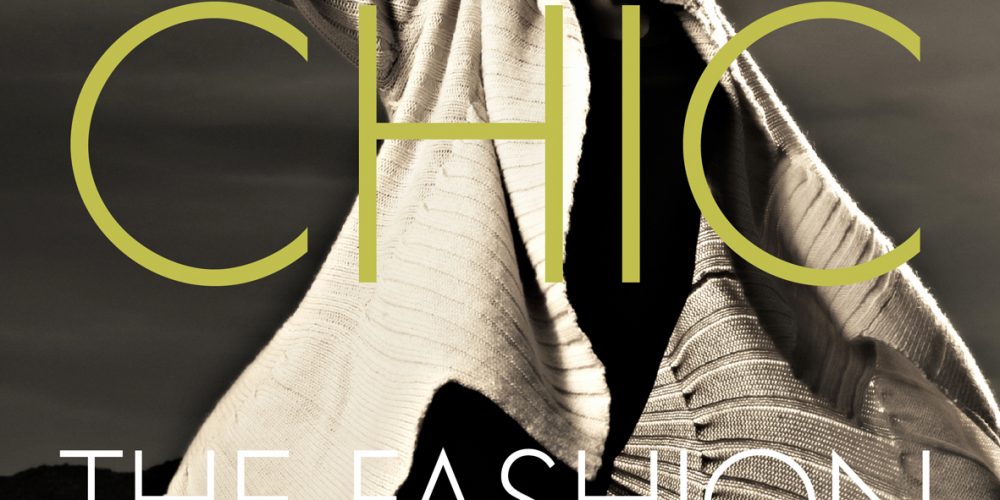Fashion is one of the most profitable industries in the world, but we rarely hear about the ugly practices used to keep beauty in business. For instance, the Aral Sea in Uzbekistan has diminished by 90 per cent, partially due to the irrigation of cotton crops for the textile industry — implicating the cotton T-shirt you could be wearing this very instant. In her aptly titled book, Eco-Chic: The Fashion Paradox, Sandy Black takes us through the darker side of fashion as well as the many routes to a better future.
Fashion is one of the most profitable industries in the world, but we rarely hear about the ugly practices used to keep beauty in business. For instance, the Aral Sea in Uzbekistan has diminished by 90 per cent, partially due to the irrigation of cotton crops for the textile industry — implicating the cotton T-shirt you could be wearing this very instant. In her aptly titled book, Eco-Chic: The Fashion Paradox, Sandy Black takes us through the darker side of fashion as well as the many routes to a better future. An academic involved with the UK-based Centre for Sustainable Fashion, Black knows her way around the topic.
The book doesn’t just chronicle the intersection of fashion and the environment, it also follows the history of fashion from a pursuit reserved only for the rich to a product that can be bought by anyone who has the money (or line of credit). Black refers to this shift as the “democratization” of fashion. Yet ironically, mass production of clothing has resulted in fashion becoming less democratic.
The popularity of “fast fashion” has skyrocketed in the past 15 years, and consumers are now more likely to clothe themselves using a $20 bill rather than fabric, scissors, a needle and thread. What is fast fashion, you ask? Fast fashion is the $5 shirt you pulled from the sale rack without considering whose tiny fingers stitched its crooked hem. Fast fashion thrives on copying designer-label garments, and mass-producing them using cheap labour in foreign countries. It is not only problematic because of labour exploitation, but also due to the chemicals used in the fabric-dyeing process, the fossil fuels burned to ship the garments to Western markets and the insatiable consumer desire for new stuff.
This is where eco-fashion steps in wearing a red cape and tights to save the fashion industry from itself, transforming it from a vicious to a virtuous cycle. Eco-Chic provides incredible insight into how the fashion industry actually functions, outlining the retail-supply-chain process that takes a T-shirt from a boll of cotton in an African farmer’s field to the consumer’s (hopefully reusable) shopping bag.
The book is like an encyclopedia of the seemingly endless elements of eco-fashion, providing examples of how companies and designers are integrating more sustainable practices into their business models. Companies such as the cleverly acronymed The Hemp Trading Company (THTC) utilize alternative fibres such as hemp, which requires less water and fewer pesticides than cotton. Other designers, such as multimedia designer and PhD Kate Goldsworthy, repurpose materials into delicate designs featuring sequins that are laser cut from discarded food packaging. Even handcrafted luxury goods, including those made by Hermes (once perceived as a frivolous label for the fabulously wealthy), can be considered eco-fashion because they are produced in low quantities using high quality materials, and are made to last for generations.
The most radical-yet-promising concept discussed in Eco-Chic is “slow fashion,” which promotes creating higher-quality clothing designed to last several trend cycles, thereby countering the planned obsolescence that plagues the lives of the fashion-conscious. Japanese slow fashion label minä perhonen doesn’t change the silhouette of its designs from season to season. The clothes are plain but aesthetically pleasing with their colourful patterns and librarian-chic appeal.
It is exciting to behold the plethora of options available to conscious consumers as outlined in Eco-Chic, but also maddening since there is not one clear right path on the road to sustainable fashion. No doubt, the fashion industry would do well to adopt many, if not all, of these practices on a larger-scale. But the true paradox of eco-fashion is that it still creates a product that needs to be sold in the capitalist marketplace – not the best arena to begin a meaningful, ethical relationship with the garments we wear.
Eco-Chic’s large fashion photographs make the book feel almost like Vogue with an environmental conscience. Black notes that it is not enough for garments to be sustainably produced, they must also appeal to our visual palate. Though Eco-Chic is not for ecowarriors in search of a singular military uniform, I, a professed fashion lover, walked away with a better idea of what to omit from my closet.
Eco-Chic: The Fashion Paradox, Sandy Black, London: Black Dog Publishing, 2008, 192 pages
Subscribe now to get more book reviews in your mailbox!
Reviewer Information
Isabel B. Slone is a fashion writer and magazine professional living in Toronto, Ontario.













